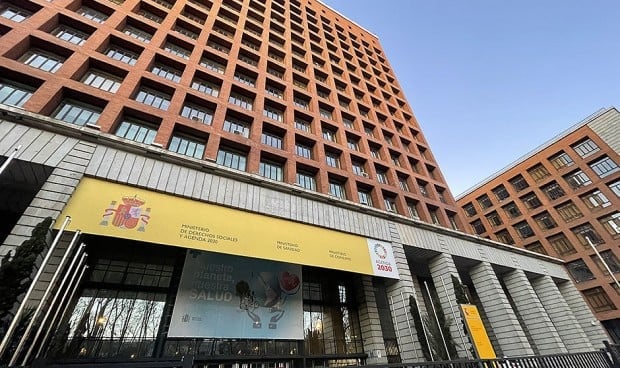Exterior of the Ministry of Health.
The public health surveillance It does not have sufficient resources and there are great differences between the autonomous communities. The Ministry of Health has just published the ‘Study of the framework of human resources and training in public health surveillance in the National Health System’ where it highlights the pending challenges and the areas of improvement that can be applied as a remuneration system for guards.
In this sense, the Covid-19 pandemic put health systems around the world on the ropes and showed the importance of public health surveillance, as well as the need to provide surveillance systems with trained staffa key aspect to guarantee an effective response to risk situations for people’s health.
“The existing information on human resources in surveillance in Spain is scarce. Previous studies show that the number of professionals dedicated to surveillance varies considerably between autonomous communities and cities with autonomy status (CCAA). The profile and training of professionals who work in surveillance, as well as other aspects such as the recognition of professional careers, remuneration or the categorization of public health personnel also shows a high variability between territories“, they explain in this document.
Therefore, to carry out a effective reform of surveillance structures It is necessary to have detailed knowledge of the current situation of human resources dedicated to this area in the SNS and this is the main reason for the study. After the analysis, the department led by Mónica García has indicated that there is no plan at the regional or state level for the management of human resources dedicated to public health surveillance. Regarding public health posts dedicated to surveillance, are estimated at 11 percentbut with great differences between territories.
Specifically, without accounting for vacant positions, there are 1.68 VSP places per 100,000 inhabitants in the CCAA. At the regional level, 17.6 percent of VSP positions in 2022 were vacant. Of the occupied places, 75.1 percent were covered and equipped places, 12.4 percent covered without provision and 12.3 percent transferred.
Other curious facts that have led to recommendations are that the 69.6 percent of the total places public health surveillance in communities were occupied by womenthe average age of the professionals being 56 years in the covered positions provided, 42 years in the covered positions without provision and 46 years in the provided ones.
Recommendations on public health surveillance
Regarding public health surveillance guards, they are forceful in their recommendations: “It is necessary to establish a remuneration system for security guards in public health in all the Autonomous Communities and that these are 24/7/365″. In fact, they also include the need to establish professional careers in the Autonomous Communities and in the Administration for health personnel who work in surveillance in public health and that this is similar between the statutory and official regime. It is a measure, among others,. to attract personnel to AGE units and autonomous communities for the development of public health surveillance work, improving working conditions equating them to those of professionals who work in health services.
Right now, Health affirms that “the ideal percentage” of public health positions is unknown that should be allocated to surveillance, but this percentage should be similar in all territories: “It is necessary to continue incorporating new properly trained VSP professionals to guarantee generational change, since about 30 percent of the places provided and occupied are covered by people over 60 years old who will retire in the coming years.
Lastly, this study also highlights the nature multidisciplinary public health surveillance and, therefore, the need to promote the multidisciplinarity of professional profiles through specific postgraduate training in relevant areas such as a Master’s degree in Public Health or equivalent (>1,000 hours), Master in Research for CS or Biostatistics, Applied Epidemiology Programs such as the defunct PEAC in Spain or the EPIET or MedIEPIET in Europe, as well as the Diploma in Public Health.
“It is necessary to implement in all the CCAA rotations of the MIR of Preventive Medicine and Public Healthas well as other professional profiles capable of carrying out surveillance tasks, with the purpose of expanding the number and diversity of professionals who acquire knowledge and experience in the work performed at VSP. This will allow strengthen interdisciplinary understanding and collaboration“, they maintain.
Therefore, both in the communities and at the central level, it is necessary to promote development of continuing training plans comprehensive measures to strengthen staff training in VSP, as well as updating knowledge and skills in line with the latest trends in public health, providing professionals with the necessary tools to meet emerging challenges in the field of health surveillance.
The information published in Medical Writing contains statements, data and declarations from official institutions and health professionals. However, if you have any questions related to your health, consult your corresponding health specialist.
